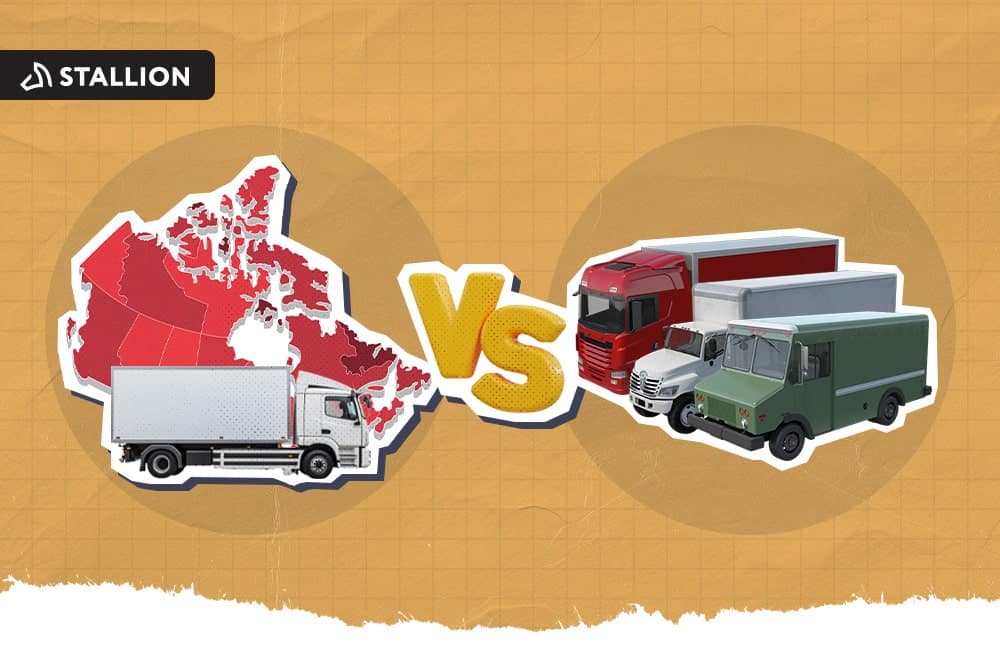
If you're running a business, you might have heard of the terms 3PL vs 4PL. At first glance, they sound like logistics jargon. But knowing the difference can seriously impact how smooth (and affordable) your shipping and fulfillment run.
Let's break down what 3PL and 4PL really mean, how each one works, and how to figure out which is best for your business.
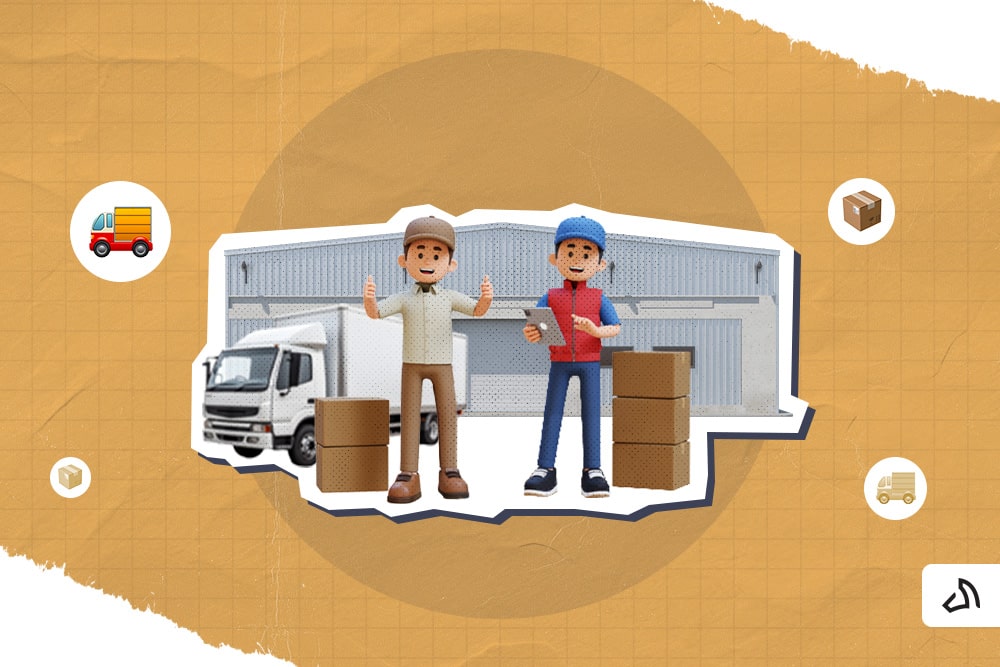
A third-party logistics provider, or 3PL, is a company that takes care of the behind-the-scenes work. This includes storing your products, packing orders, and shipping them out to your customers.
It's perfect for sellers and businesses who want to offload day-to-day logistics but still stay in control of the process.
Think of it like this:
You focus on growing your brand and making sales. Meanwhile, your 3PL partner handles the fulfillment and shipping.
Here’s how a typical 3PL provider setup looks:
1. Receiving. The 3PL warehouse receives the inventory you sent them. Then, the staff check it in and prepare it for storage.
2. Warehousing. They will store and sort your products safely in their warehouse, allowing orders to be dispatched quickly. It makes the logistics operations smoother and more efficient.
3. Inventory Management. This logistics service allows you to track your stock through a dashboard. You will know what's in, what's low, and when to restock.
4. Order Processing. Once a customer places an order, the 3PL service picks and packs it right away.
5. Shipping. Its logistics process includes shipping the customer's orders with one of its courier partners. The fees often come at discounted rates.
6. Returns Management. Returns are common in business. So, if a customer sends something back, your 3PL partner can handle it and do the restocking.
7. Reporting and Analytics. Partnering with a 3PL has other advantages. For one, you get access to data on orders, delivery times, inventory turnover, and more.
Also Read: Top 3PL Companies in the US (2025)
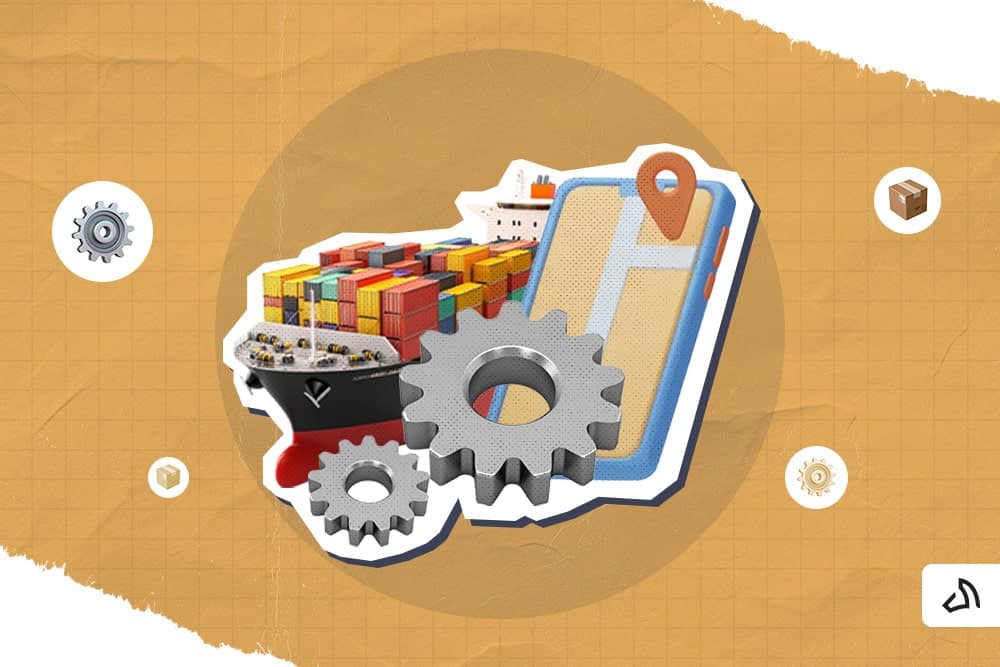
A fourth-party logistics provider, or 4PL, takes things up a notch. Instead of handling just the shipping part, they oversee your entire supply chain, from sourcing to delivery.
They usually don't own warehouses or trucks themselves but manage other logistics partners (like 3PLs) on your behalf.
Simply put:
A 4PL provider is your logistics manager or consultant. They make sure everything flows smoothly behind the scenes.
Here’s what a 4PL does:
1. Develop Strategy. As your lead logistics provider, they will help you build a game plan for how your supply chain should run.
2. Select Provider. A 4PL process involves helping you select the best 3PLs, carriers, and suppliers to partner with.
3. Integration and Coordination. A 4PL acts as a single point of contact to ensure all systems and partners work together smoothly. It integrates all logistics functions—warehousing, freight, customs, etc.—into one ecosystem.
4. Implement Technology. The 4PL company sets up platforms so you can monitor what's happening in your supply chain.
5. Optimize Supply Chain. The logistics company finds inefficiencies and identifies ways to save time and money.
6. Manage Performance. Apart from helping you develop plans, the logistics service provider also tracks how everyone's doing. They make sure KPIs are being met.
7. Collaboration and Innovation. Your 4PL partners help you keep improving your logistics strategy over time.
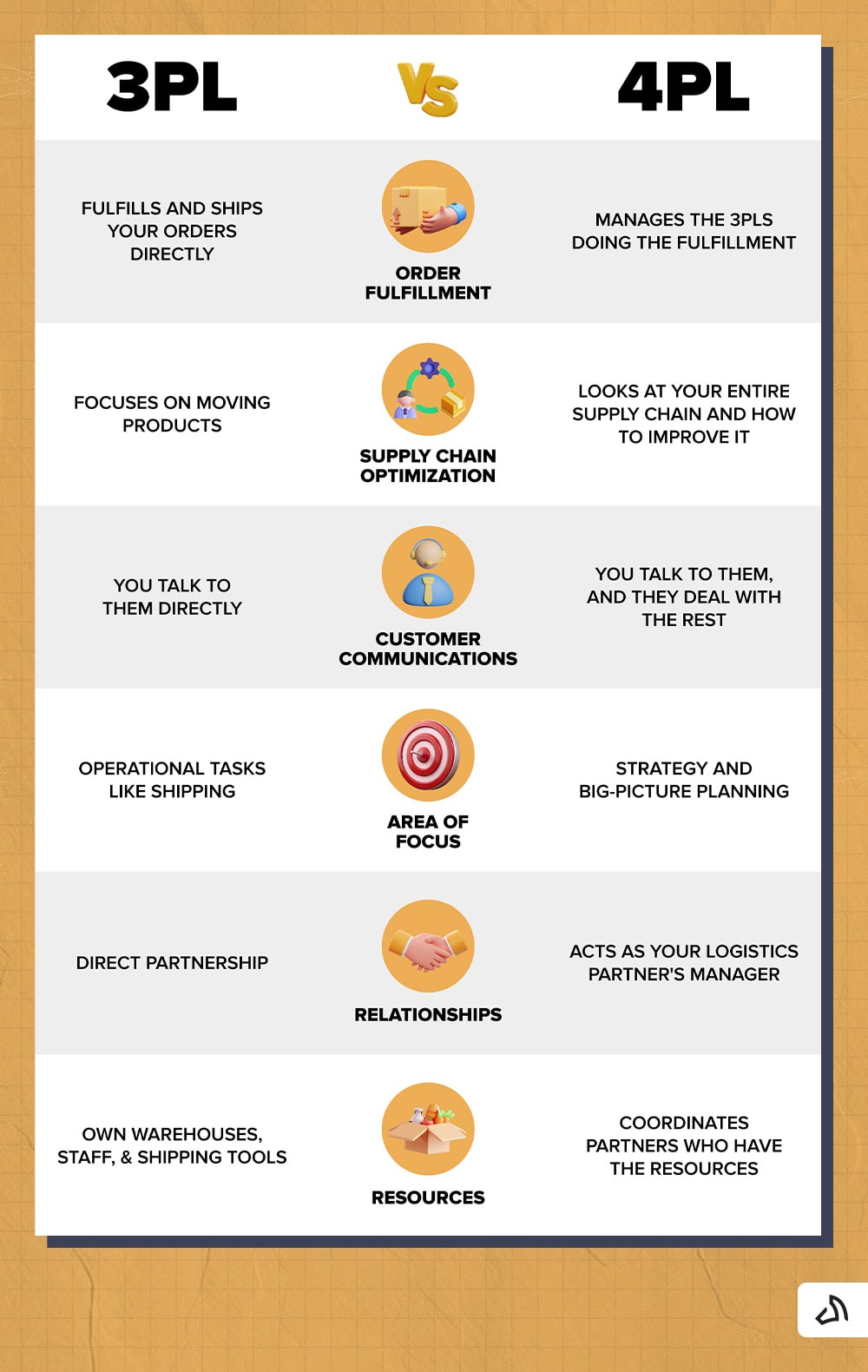
So, what's the difference between these two? Let’s compare how 3PL and 4PL stack up in the supply chain and logistics:
A 3PL handles direct order fulfillment. In contrast, a 4PL manages fulfillment through 3PL partners.
A 3PL focuses on individual logistics tasks. On the other hand, 4PLs oversee and improve the supply chain operations.
3PLs communicate directly with your team. However, a 4PL model communicates differently. You will talk to them, then the 4PL partner will discuss with the rest of the parties involved.
A 3PL handles day-to-day logistics like warehousing, fulfillment, and shipping. Meanwhile, a 4PL takes a strategic approach. It oversees the entire supply chain and manages multiple partners to optimize performance.
With a 3PL, you work directly with the service provider to manage tasks like shipping, warehousing, and fulfillment. A 4PL, on the other hand, acts as a supply chain integrator. They manage all the vendors and logistics partners on your behalf so you don't have to coordinate everything yourself.
A 3PL typically owns or leases physical assets, such as warehouses, trucks, and fulfillment centres, which it uses to handle logistics operations. However, a 4PL doesn't rely on its own assets. Instead, it leverages the resources, networks, and technology of multiple providers to coordinate and optimize the entire supply chain.
To really understand 3PL and 4PL, it helps to know how they fit into the bigger logistics picture. Here’s how they compare to other logistics models:
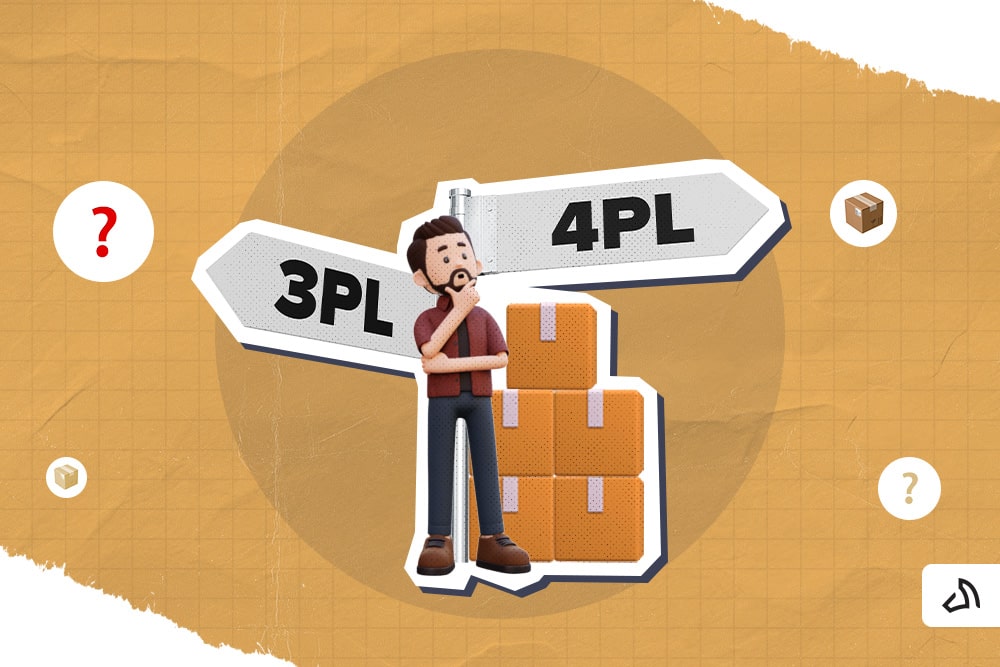
If you're still unsure whether to get 3PL or 4PL, here's how to figure it out:
If you're running a smaller eCommerce business, a 3PL is usually all you need to handle fulfillment efficiently. However, if you have a larger operation with multiple suppliers or international shipping, a 4PL might be worth considering for added coordination and strategic oversight.
If you want to stay more hands-on with your logistics, a 3PL is the way to go. Meanwhile, if you'd rather hand it off and let someone else manage everything, a 4PL is worth exploring.
Multiple 3PL providers can scale with your order volume and support growth. However, 4PL services take it a step further. They can scale your business and help you optimize as you expand into new markets or bring on additional suppliers.
One of the key differences between a 3PL and a 4PL is cost. 3PLs are typically more affordable and flexible. 4PLs offer greater strategic value but usually come at a higher price.
3PLs offer tools to help you track and manage orders. On the other hand, 4PLs take it further by bringing everything together into one big-picture view of your entire supply chain.
A 3PL handles the core logistics, like packing, shipping, and returns. Meanwhile, 4PLs cover not just that. It also includes strategy, coordination, and optimization across your entire supply chain.
A 3PL handles the core logistics, like packing, shipping, and returns. Meanwhile, 4PLs cover not just that. It also includes strategy, coordination, and optimization across your entire supply chain.
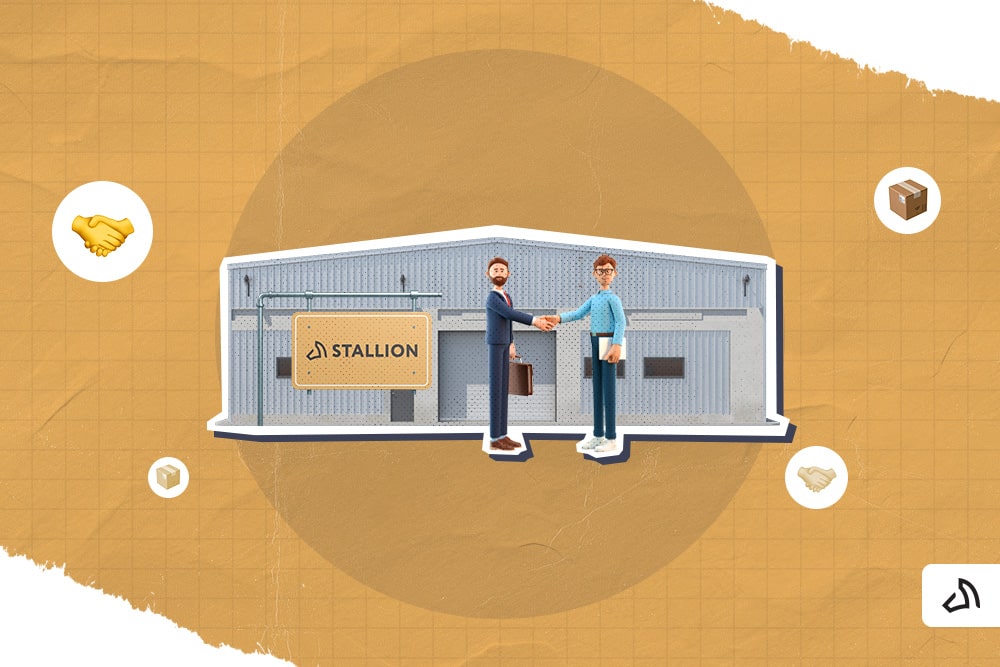
Are you in need of a reliable 3PL fulfillment partner in Canada? Stallion makes shipping and logistics simple for online sellers like you.
We handle:
You'll also get access to an easy-to-use dashboard for tracking, inventory insights, and automation tools.
How about you?
You can focus on growing your store!
Let Stallion take care of the heavy lifting. Start today and see how easy fulfillment can be.

Candy Rada is a dedicated professional with tons of experience in content writing for the shipping industry. As a literature degree holder, she excels in creating engaging content with strategies that enhance brand visibility. She enjoys playing with her cats, reading dystopian books, and joining trivia games in her free time.
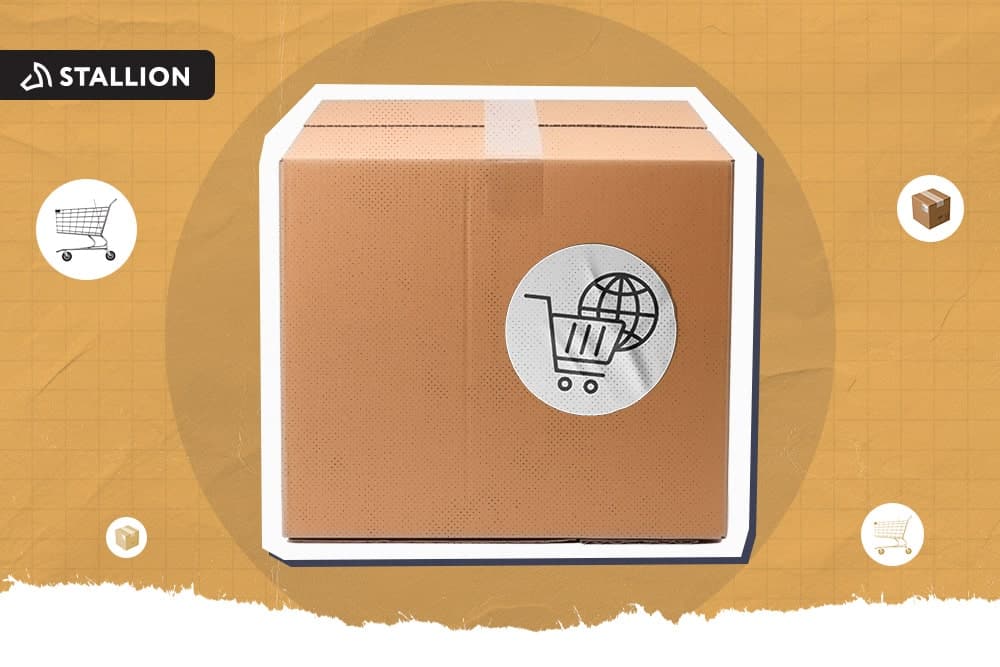
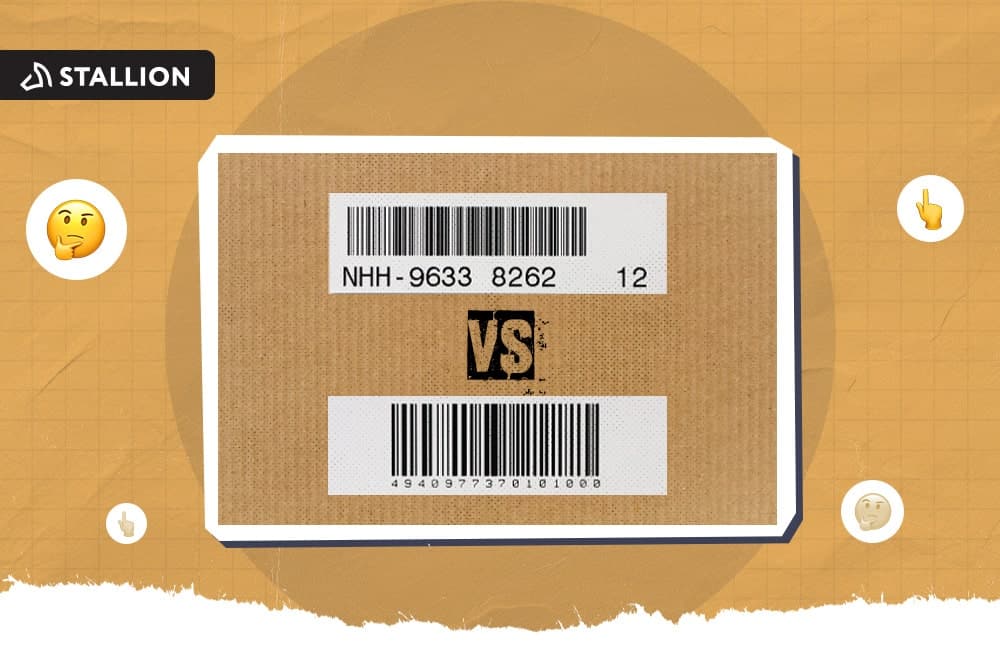
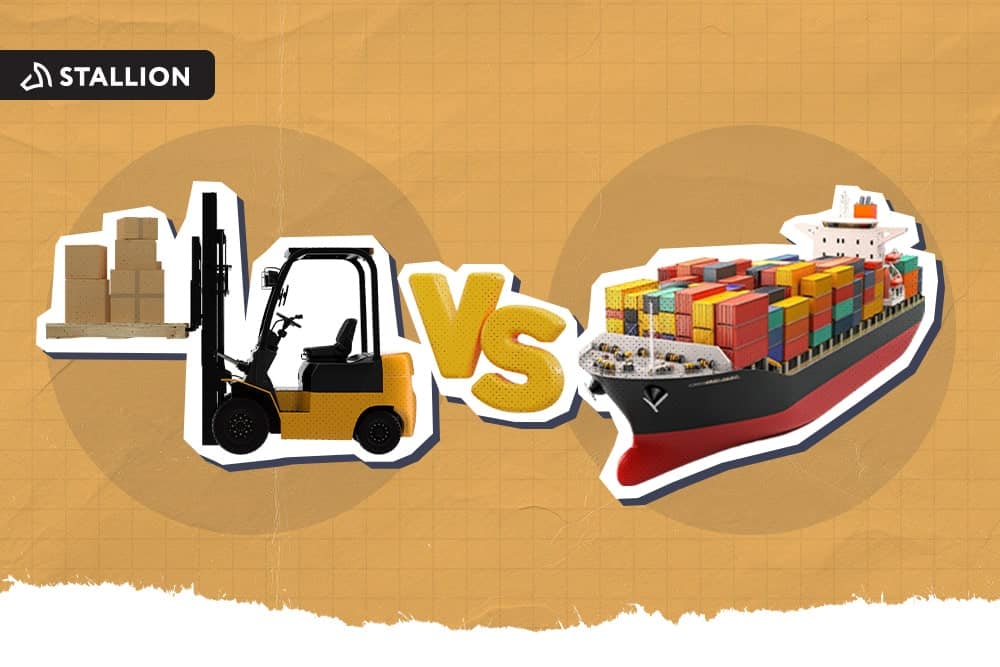
Can our fellow Torontonians relate?
-
#smallbusiness #business #entrepreneur #socialmedia #shipping #ecommerce #canadianecommerce #shopify #poshmark #b2b #saas #etsy #ebay #canada #canadiansmallbusiness #shoplocalcanada #entrepreneur
#toronto

Here’s your quick hassle free shipping from 🇨🇦 to 🇺🇸 as a business owner!
-
Any questions?! Leave them 👇🏻 and save this video so you don’t forget!
-
#smallbusiness #business #entrepreneur #socialmedia #shipping #ecommerce #canadianecommerce #shopify #poshmark #b2b #saas #etsy #ebay #canada #canadiansmallbusiness #shoplocalcanada #entrepreneur

Meet @drinkbenny a 🇨🇦 female founded energy drink brand! Instead of focusing on their products, they’re taking a unique approach by hosting in person events in different Canadian cities to offer an experience for their community 🧡
-
What are your thoughts on in person events? 💭
-
#smallbusiness #business #entrepreneur #socialmedia #shipping #ecommerce #canadianecommerce #shopify #poshmark #b2b #saas #etsy #ebay #canada #canadiansmallbusiness #shoplocalcanada #entrepreneur

Do you know the difference between DDU and DDP when shipping internationally 🌏 ?
-
Questions? Leave them below! 👇🏻
-
#smallbusiness #business #entrepreneur #socialmedia #shipping #ecommerce #canadianecommerce #shopify #poshmark #b2b #saas #etsy #ebay #canada #canadiansmallbusiness #shoplocalcanada #entrepreneur

Here’s a quick hack to save time from choosing multiple postage options
↪️ Turn on the lowest postage rate automation to save you time!
-
Questions? Leave them below! 👇🏻
-
#smallbusiness #business #entrepreneur #socialmedia #shipping #ecommerce #canadianecommerce #shopify #poshmark #b2b #saas #etsy #ebay #canada #canadiansmallbusiness #shoplocalcanada #entrepreneur
